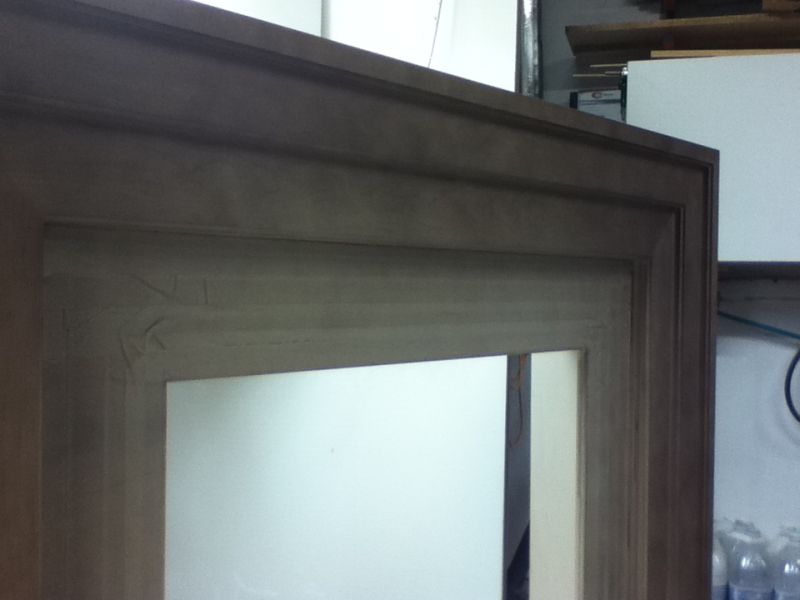Shellac Thickness and Finish Compatibility
Thoughts on shellac choices and application techniques to improve performance of topcoats over the shellac. May 17, 2010
Question
I am finishing some pine interior doors. I stained them to match existing doors in the house, so I used the same Minwax stain. The existing doors were polyurethaned but I am spraying these with Target EM 2000.
I stained then sealed the doors with shellac that I mixed from flakes. I mixed a 2# cut and sprayed the shellac on heavier than I wanted. I sprayed the doors flat so there are no runs. I sprayed it on about 3 mils wet and probably heavier in some areas. Should I sand the shellac back before I topcoat with EM 2000, or can I just scuff sand it and shoot two thin coats?
Forum Responses
(Finishing Forum)
From contributor K:
Kind of thick. Let dry thoroughly before spraying with Target.
From contributor P:
Way too thick. Also, you should only use dewaxed shellac as a sealer.
From the original questioner:
Thanks. I contacted Jeff at Target and he said I should be fine to just scuff sand. I did post at Target's forum when I started this job and Jeff told me to make sure I seal the Minwax stain well. I guess I sealed it too well. Anyway, I just started spraying in my shop a few months ago, so I have a lot to learn, sometimes the hard way.
From contributor K:
Sorry - I thought it was dewaxed. If it isnít then you should sand down and recoat with SealCoat or other dewaxed shellac.
From the original questioner:
I did use de-waxed shellac I mixed from flakes. Jeff at Target told me not to use Zinsser seal coat because they had some problems with crazing when using it under their finishes.
From contributor K:
I've not had problems with SealCoat under Target but I have heard of problems. Then again I've had problems with Target's H20 shellac under their products...
From contributor A:
The ph of the shellac is the concern of the Target folks and Jeff. Shellac from flakes is not dewaxed.
From the original questioner:
Why do you say shellac from flakes is not dewaxed? You can buy them at shellac.net, shellaccshack.com, woodcraft.com and many other places on the net.
From contributor C:
With normal de-waxed, usually with a .2% dewax, you will not have problems unless the liquid coating being applied over it has ingredients such as ammonia, which can dissolve the shellac or other such high ph bases in the mix. I find a 50/50 mix of sandarac and de-waxed shellac give better all around performance as a sealer than shellac itself does. Of course proper plasticizers also play an important role in keeping the coating from being too brittle.
From the original questioner:
Why do you think Target Coatings claims to have some crazing problems over sealcoat but not dewaxed shellac mixed from flakes? I have read it could be from additives such as stabilizers or preservatives.
From contributor C:
Many of their and other's products contain ammonia products, which can act as a stripper/remover or a softener when in contact with dried shellac. This can be magnified by any slow evaporating solvents such as the monoethyleithers like butyl cellosolve, etc., which in combination with any ammonia product will affect the shellac film to varying degrees. Minute amounts of wax could act to a slight degree as a barrier against more severe damages from the over film.
Of course - any other solvents in the formulation that act in a similar way could be at fault. Not knowing their formulations, I can't say. You can look at the MSDS for the products and get a list of the solvents used, which would give you a better idea of why this problem happens, to varying degrees. Though they may not list ammonia.
Why it would react with one type of shellac or another is merely a matter of dryness of the shellac film versus the contents of the overcoat being applied along with thickness. Thinner coats of their finish over shellac would be less aggressive in its nature/heavier coats more injurious.
As was stated, even problems with their inferior H2O shellac happen from time to time. (Inferior in the sense of not having the best properties of alcohol solved shellac.) H20 shellacs have been used for over a century outside the wood coatings industry for such things as stiffening of felt hats so they maintain their shape and coatings for pills/fruit/nuts/etc. It's not something new and great - it's inferior to either waxed or dewaxed shellac as far as wood finishing goes. About the only thing I use it for is to touch up my acrylic art painting.
